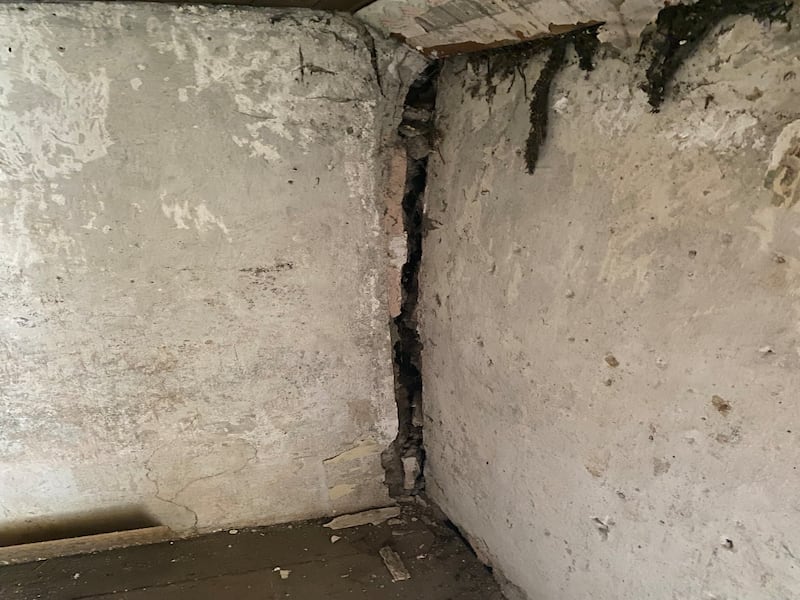After starting to seriously consider doing up the house, the same bit of advice kept coming up – speak to as many people with knowhow as possible before making any big decisions.
Listening can be a tiresome task, but given neither of us came in knowing much about undertaking a major renovation project, let alone one involving a 250-year-old thatch, we decided to ask around.
Many people – most in fact – did seem to have opinions about what to do when the subject was raised, regardless of how qualified they were. Of course, these differed greatly beyond the fact there would be plenty of work involved, and a potentially lovely home at the other side.
“Mick says old houses like that are a money pit,” said one, helpfully.
“You might get in before you’re 40,” said another to a 36-year-old.
“That’s going to be straightforward, affordable and fun,” said nobody.
When it came to finding actual expertise, we initially spoke to a former builder turned conservation specialist, a thatcher, the local authority heritage officer, and a man who seemingly knew more about lime mortar than I did about myself.
Mercifully enough, nobody raised any red flags, but the need to maintain “the fabric” of the house was consistently stressed. That was the plan all along given its status as something of an heirloom.
As furniture was removed, and layer after layer of old wallpaper was stripped away, a clearer picture of what lay beneath started to emerge. The reveals were interesting but not always pretty.
The lime-plastered walls were solid in sections but damp and crumbly in others. The same went for the beams supporting the thatch, which had housed their share of woodworm over the years. Water was clearly getting in down a chimney (maybe two) and the same went for the roofs on the front porch and rear extension.
The removal of an old wardrobe highlighted a largely unused door. The hope was that the clearly slanted frame bordering it, could be attributed to someone using a shoddy spirit level rather than outright subsidence.

Around that time, we were introduced to someone described to me as “a fella who knows his way around old houses like yours”. A lime plasterer (and the son of a lime plasterer), he lived up to his billing as we made our way through the place, noting some of the issues I’d spotted, and pointing out others I’d not.
As we peeled away some damp wallpaper in an upstairs room, something nobody wants to see coming through a wall moved into focus – daylight. A secret window? God no. There was a chunky crack where the gable and front walls met. An explanation for that slanted doorframe. Wonderful.
While stressing that this need not be terminal, he explained it went a little beyond his bailiwick and recommended having a structural engineer carry out a survey before proceeding. Someone was found and a seven-page report soon followed. It explained that the house “appears in general to be in reasonable condition for its type and age”, but that significant repairs were needed.
This potentially extended to, among others, the chimneys, walls, floors, windows, electrics, joists, plumbing, lowering the ground level around the house and considering underpinning and putting a tie in that corner where that crack lives. An à la carte rather than an early bird.
The report said “a suitably qualified conservation professional” should be employed to seek their opinion on how the work should be approached. Another voice for the collection.
After a few phone conversations, some of which left me feeling I’d be better off going back searching the property apps, I spoke to a conservation engineer, who sounded interested and was happy to come give an opinion on where this thing should go. He outlined key issues and focused on some finer details (like making small bricks using mud and straw to fill a gap by a fireplace). Importantly, he provided some reassurance around the apparent subsidence, saying that if the house had moved that much in a quarter of a millennium, it wasn’t going to run away in our lifetimes.
Feeling mildly emboldened, and hoping to not let the problem get any worse, we had the plasterer return. Someone at some stage in the past had tried to address the crack using a big slop of concrete, which we’d been told should be viewed as anathema to a house like this. It was chipped away and the plasterer used a mix of wattle, daub and lime mortar to close up the gap before sorting the leaking chimneys.

The next step was finding a builder and getting a ballpark price for what turning the place around might cost. We weren’t the only ones seeking to start a renovation project as the Covid restrictions fell away, and finding someone willing to come look at the job, let alone take it on, wasn’t so straightforward.
Around then, my mother mentioned that a family friend was doing renovations on a castle in Co Wicklow. We met at a house he was working on locally and he provided some helpful tips. After hearing our plans he said he’d be interested in taking a look, given he had done some work on the house previously. A contractor who we knew (and who knew the house) would be a great starting point.
He reckoned that the job would cost about €1,000 per square metre, of which there were close to 200 to worry about. Maths was never a strong point but having a round figure, however loose, gave us something to work with.
Now it was time to see if a bank wanted to work with us.















